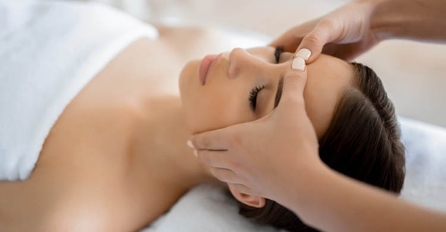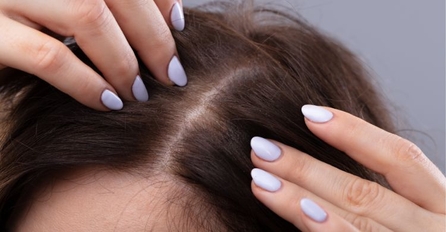Best Results
5 Sessions
Results Duration
Long Lasting
Treatment Cost
£450
Prodecure Time
40 Minutes
Back to work
Immediately
Pain
Minimal / Moderate
Non surgical Treatment Reviews
What our customers think
0+ Treatments Performed
0+ Combined years of experience
Exosomes London
What is Exosomes treatment?

Exosomes are small extracellular vesicles that play a role in cell-to-cell communication and are involved in various physiological processes, including hair growth. Exosome therapy for hair growth is a promising area of research and potential treatment for hair loss and thinning.
Exosomes contribute to maintaining and preventing hair loss by promoting hair follicle growth, increasing cell proliferation, enhancing hair follicle health, reducing inflammation, oxidative stress, and promoting cell survival. They deliver growth factors, cytokines, and regulatory molecules that stimulate dermal papilla cells, improve nutrient delivery, and support overall hair health, ultimately leading to improved hair growth and reduced hair loss.
Unlike many hair care products, exosomes operate at a cellular level, ensuring the integrity of the hair growth cycle for longer periods. They not only stimulate the growth of new hair but also improve the thickness of existing strands while reducing baldness and scalp thinning associated with conditions like alopecia. By accelerating cell division, exosomes aid in repairing damaged hair follicles, contributing to the faster growth of new hair.
Exosomes Cost
Exosomes Hair Loss Price
Consultation: £20 £0
1 Session: £450
3 Sessions: £1350
5 Sessions: £2250
- Targeted delivery: Exosomes can target specific cells and tissues, delivering growth factors and signaling molecules directly to the hair follicles to stimulate growth and improve hair health.
- Natural and safe: The Exosomes are collected from salmon testes cells collected from ethically farmed salmon in Korea this then gets cultivated in embryonic stem cell media, making them a natural and safe treatment option for hair loss with minimal risk of side effects or complications.
- Non-invasive procedure: Exosome therapy for hair loss typically exosomes liquid being applied topically to the scalp and is finished with microneedling, which is a minimally invasive procedure that does not require surgery or extensive downtime.
- Personalized treatment: Exosome therapy can be customized to individual needs and hair loss concerns, providing a tailored approach to addressing hair thinning, hair loss, or other scalp conditions.
- Anti-inflammatory effects: Exosomes have anti-inflammatory properties that can help reduce inflammation in the scalp, which is often associated with hair loss conditions such as alopecia.
- Antioxidant benefits: Exosomes contain antioxidants that can help protect hair follicles from oxidative stress and free radical damage, promoting healthier hair growth and reducing hair loss.
- Long-lasting results: Exosome therapy has the potential to provide long-lasting results for hair growth and maintenance, offering a sustainable solution for managing hair loss and promoting hair regrowth.
Why Choose Exosomes for Hair Loss?
Exosomes offer a promising hair loss treatment option due to their ability to stimulate hair follicle growth, improve hair health, and reduce inflammation and oxidative stress that contribute to hair loss. They provide a targeted and natural approach to promoting hair growth without the potential side effects or complications associated with other treatments. Utilizing ENTRÆ Technology, the doubling time of harvested exosomes is minimized, resulting in a homogeneous and pure final product with up to 10,000 times more exosomes per unit compared to other sources.
Who is suitable for Exosomes Hair Loss Treatment
The audience suitable for exosomes hair loss treatment includes people experiencing hair thinning, pattern baldness, or other forms of hair loss. Both men and women seeking effective, non-invasive solutions for hair restoration are potential suitors. Additionally, individuals looking for natural alternatives or those who have not found success with conventional treatments may also be interested in exosomes therapy.
Why Exosomes Hair Loss Treatment Stands Out
Exosomes hair loss treatment stands out from other competitors due to its non-invasive nature, natural formulation, and targeted approach. Unlike invasive procedures like hair transplants or harsh chemical treatments, exosomes therapy offers a safe and minimally invasive option with no downtime. Moreover, its ability to stimulate hair growth at a cellular level sets it apart, providing more comprehensive and long-lasting results compared to topical treatments or medications that merely address symptoms. With exosomes, you can achieve fuller, thicker hair without compromising on safety or efficacy.
Exosomes Hair Loss vs. PRP Hair Loss Treatment: Choosing the Right Solution
When it comes to combating hair loss, both exosomes therapy and platelet-rich plasma (PRP) treatment are popular choices. Each approach offers unique benefits, but understanding the differences between the two can help individuals make an informed decision about which option best suits their needs.
What is the source of Exosomes Hair Loss Treatment?
The Exosomes are collected from salmon testes cells collected from ethically farmed salmon in Korea this then gets cultivated in embryonic stem cell media. 95% Genetic Congruency Between Salmon & Humans (Polynucleotide) making it safer than human derived exosomes and more effective than plant based exosomes. Salmon Testis contains highly purified DNA. By utilising salmon cells, we can ensure that the Exosomes have low levels of free radicals and impurities.Why Choose Exosomes?
Targeted Approach: Exosomes work at a cellular level, addressing the underlying causes of hair loss for long-lasting results.Non-Invasive: Unlike invasive procedures like hair transplants, exosomes therapy is minimally invasive with no downtime.
Natural Formulation: Exosomes are derived from natural sources, making them a safe and sustainable option for hair restoration.
Comprehensive Results: By stimulating hair follicle cells and enhancing blood circulation, exosomes therapy offers comprehensive results, promoting thicker, healthier hair growth.
PRP Hair Loss Treatment:
PRP therapy involves extracting platelets from the patient's blood and injecting them into the scalp to stimulate hair follicle activity and promote hair growth. Platelets contain growth factors that aid in tissue repair and regeneration.Why Choose PRP?
Proven Effectiveness: PRP has been clinically proven to stimulate hair growth and improve hair density in individuals with certain types of hair loss.Minimal Risk: Since PRP utilizes the patient's own blood, the risk of adverse reactions or complications is minimal. Versatility: PRP can be used in conjunction with other hair loss treatments, such as medications or hair transplant surgery, to enhance results.
Fast Procedure: PRP treatment sessions are typically quick and can be performed in a medical office with little to no downtime.
Choosing the Right Hair Loss Option:
Ultimately, the choice between exosomes therapy and PRP treatment depends on factors such as individual preferences, the severity of hair loss, and treatment goals. While both options offer benefits, you should consult with our qualified healthcare providers to determine the most suitable approach for your unique needs. Whether opting for the targeted approach of exosomes therapy or the proven effectiveness of PRP treatment, you can take proactive steps towards restoring fuller, healthier hair.Prestigeous Award
Clinic of excellence

Prestigeous Award
Clinic of excellence
Dermamina has been honoured with the prestigious "Clinic of Excellence". This remarkable recognition serves as a testament to our unwavering commitment to providing exceptional services and delivering the highest standard of patient care.
Read more
We strive to create an environment where patients feel valued and supported throughout their journey. We are inspired to continue our pursuit of excellence to provide the best possible care to our valued patients.
PRP & Exosomes
How PRP with Exosomes Treats Hair Loss

Hair loss can significantly impact one's self-image when facing the mirror. Fortunately, there are various surgical and non-surgical interventions available to address this issue.
Platelet-rich plasma (PRP) therapy stands out as an advanced treatment for hair restoration, offering a promising solution for those seeking non-surgical options to combat thinning hair.
Below is an overview of how PRP therapy addresses hair loss and essential information about platelet-rich plasma, including the role of exosomes:
Understanding PRP: A Brief Background
Initially developed in the 1970s to treat conditions like arthritis and muscle injuries, PRP therapy harnesses the body's natural healing mechanisms, finding applications across different medical fields.
Decoding Platelets and Plasma
Plasma, the fluid component of blood, primarily consists of water and proteins, facilitating the transportation of blood components. Platelets play a crucial role in healing processes, including clotting and stimulating hair follicles.
Insight into Exosomes
Exosomes play a pivotal role in tissue regeneration, containing numerous growth factors essential for healing. When used in PRP therapy, exosomes stimulate the production of new hair follicles, revitalizing dormant follicles that cause hair thinning.
Procedure Overview
PRP therapy involves isolating platelets from the patient's blood, processing them into an injectable form, and applying them to the affected area.
Comfort and Duration of Treatment
PRP injections typically cause minimal discomfort and take a short time to complete, offering a convenient option for non-surgical hair restoration.
Anticipating Results
Most individuals notice hair growth and thickening within a few months of PRP therapy, with optimal results achieved through a series of treatments over several months.
Longevity of Results
PRP treatments yield long-lasting outcomes, necessitating occasional touch-ups to maintain results.
Potential Side Effects
Although rare, potential side effects of PRP therapy include infection and discomfort at the injection site..
Potential side effects include redness, soreness, swelling, bruising, discomfort of the injection sites and infection.
Eligibility and Considerations
PRP therapy is generally well-tolerated and suitable for individuals over 18 years old with good health. It can address various types of hair loss, Excluding medically related hair loss, due to underlying medical conditions.
Questions about Exosomes Hair Loss
Frequently Asked Questions
Exosomes are sourced from salmon testes cells obtained from ethically farmed salmon in Korea, which are then cultivated in embryonic stem cell media. With a remarkable 95% genetic congruency between salmon and humans (polynucleotide), these exosomes are deemed safer than human-derived counterparts and more efficacious than plant-based alternatives. The high purity of DNA found in salmon testes ensures low levels of free radicals and impurities in the exosomes.
These exosomes contain growth factors and proteins that promote hair growth, making them a promising solution for combating hair loss.
Unlike traditional treatments, which often target symptoms rather than underlying causes, exosome therapy for hair loss focuses on rejuvenating hair follicles at a cellular level.
It stimulates natural hair growth processes without the need for invasive procedures or ongoing medication, offering a regenerative approach to addressing hair loss concerns.
Exosome therapy can be beneficial for various types of hair loss, including male and female pattern baldness, alopecia areata, and even hair thinning due to aging or hormonal changes.
However, individual results may vary, and a consultation with a qualified healthcare provider is recommended to determine the suitability of exosome treatment for specific hair loss concerns.
Not suitable for underlined medical conditions.
Noticeable reduction in hair shedding may be observed in just four weeks. Natural hair growth can typically be seen within a span of two to three months. The growth process may continue gradually over the course of a year.
After the procedure, allow the Exosomes to dry on your hair without washing it off or applying anything on top of it for 24 hours. You may shower and wash your hair with water 24 hours after your procedure. (Avoid hot water, scalp massaging or any other rough treatment of your hair). You may return to your normal hair care routine 48 hours after the procedure.
No hair dyes, extreme temperatures for the first 48hrs.
Exosome therapy for hair loss typically involves applying exosomes directly into the scalp, targeting areas where hair growth is desired. The procedure is minimally invasive and generally well-tolerated, with little to no downtime.
Over time, patients may notice gradual improvements in hair density, texture, and overall scalp health as the exosomes work to stimulate natural hair growth processes.
Exosome therapy for hair loss is considered safe, with minimal risk of adverse effects. Since exosomes are derived from the patient's own cells or from thoroughly screened donors, the likelihood of allergic reactions or rejection is low.
However, as with any medical procedure, some individuals may experience mild discomfort, soreness, bruising, redness, or swelling at the applying site, which typically resolves quickly on its own. It's essential to discuss any concerns with your healthcare provider before undergoing exosome therapy for hair loss.
Having active infection at the site of the
Being pregnant or breast feeding
Having active malignancy and receiving chemotherapy and/or radiation treatments
Having history of anaphylaxis to Exosomes treatments in the past
Any allergy to fish or seafood.
Absolutely none. You may feel tenderness in the area for a few hours, and we ask that you don’t wash your hair until the next day if possible.
The treatment lasts about 20 minutes. No blood draw needed. Advisable to wash your hair the night before the treatment and do not wash or die hair for 48 hours after the treatement.
For optimal treatment results, a single treatment every 6 months is the best.
There is no guidance on this, but Dermamina advises waiting at least 1 week before coloring the hair.
Absolutely yes.
Yes. However, results varies depending on the individual response.
Yes. However, results varies depending on the individual response.
Yes. However, results varies depending on the individual response.
Yes. However, results varies depending on the individual response.
There is no need to stop them, but be cautious as supplements tend to cause a little bit more bleeding from the treatment.
SaveFace
You safety matters

At Dermamina we have successfully attained the Save Face Accreditation, which signifies our consistent adherence to the highest industry standards. To earn this esteemed recognition, we underwent a rigorous evaluation conducted by an independent body.
Read more
Save Face is a register accredited by the Professional Standards Authority, holding official recognition from the Government, the Department of Health, and NHS England. This acknowledgment underscores our unwavering commitment to delivering exceptional quality services, meeting the stringent criteria set by these esteemed organizations.







